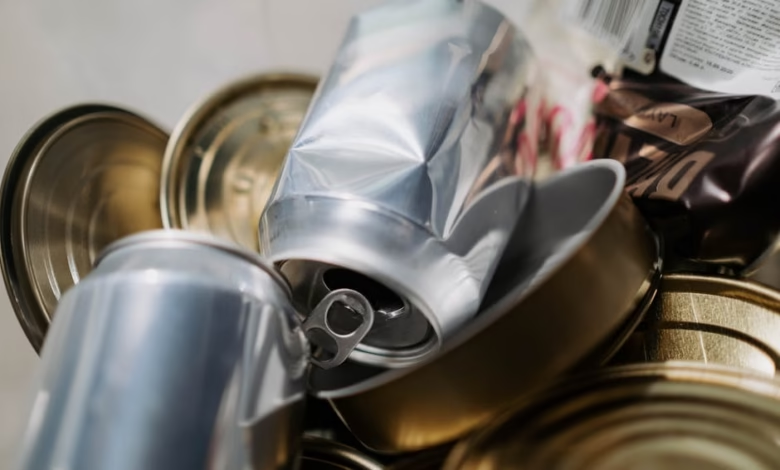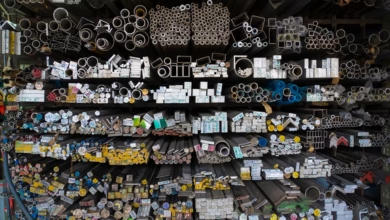Exploring Metal Fabrication: Key Processes, Material Insights, and Innovations in Sustainable Practices

In today's rapidly evolving manufacturing landscape, metal fabrication stands at the forefront of innovation and efficiency. This essential process encompasses a variety of techniques such as welding, cutting, and bending, which are crucial for transforming raw metals into functional components for numerous industries, including construction, automotive, and aerospace. Understanding the intricacies of metal fabrication is vital for anyone involved in metallurgy or manufacturing, as it directly impacts the performance and longevity of metal products.
This article will delve into the key processes and techniques of metal fabrication, exploring how different types of metals—ranging from ferrous and non-ferrous to precious metals—play a pivotal role in the manufacturing process. Furthermore, we'll examine the latest innovations in the field, focusing on sustainable practices like metal recycling, as well as emerging trends such as 3D printing of metals. Whether you're interested in industrial metals, gold investing, or the latest advancements in battery metals, this guide will provide valuable insights into the dynamic world of metal fabrication. Join us as we navigate the complexities of metal alloys, base metals, and the future of sustainable metal production.
- 1. Understanding Metal Fabrication: Key Processes and Techniques in Welding, Cutting, and Bending
- 2. The Role of Different Metals in Fabrication: Exploring Ferrous, Non-Ferrous, and Precious Metals
- 3. Innovations in Metal Fabrication: Sustainable Practices and Emerging Trends in 3D Printing and Recycling
1. Understanding Metal Fabrication: Key Processes and Techniques in Welding, Cutting, and Bending
Metal fabrication is a crucial aspect of manufacturing that involves transforming raw metals into finished products through various processes. Understanding the key techniques in welding, cutting, and bending is essential for anyone involved in this field, as these methods greatly influence the quality and functionality of the final output.
Welding is one of the most prominent processes in metal fabrication, where two or more pieces of metal are joined together through the application of heat and pressure. This technique is commonly used with both ferrous metals, such as steel, and non-ferrous metals like aluminum and copper. Different welding methods, such as MIG (Metal Inert Gas) and TIG (Tungsten Inert Gas), cater to various applications, including construction metals and aerospace metals. Proper welding not only ensures strong joints but also minimizes issues like metal corrosion, which can compromise the integrity of structures over time.
Cutting is another fundamental technique in metal fabrication. It involves the separation of metal materials into desired shapes and sizes. Various cutting methods exist, including laser cutting, plasma cutting, and water jet cutting, each offering unique advantages depending on the type of metal—whether it be base metals like zinc or precious metals like gold and platinum. The precision achieved through these cutting techniques is vital, especially in industries such as automotive and energy, where accuracy directly impacts performance and safety.
Bending is the process of deforming metal sheets or bars into specific angles or shapes using mechanical force. This technique is essential for creating components in a range of applications, from jewelry metals to industrial machinery. The bending process can be performed using several methods, including press braking and roll bending, and is crucial in the production of metal alloys that require specific geometries for optimal functionality.
Additionally, the rise of sustainable metal production practices is transforming the landscape of metal fabrication. Techniques such as metal recycling not only reduce waste but also conserve resources, making them increasingly important in today’s environmentally-conscious manufacturing sector. Furthermore, advancements in metallurgy and the emergence of 3D printing metals are opening new avenues for innovation, allowing for the creation of complex geometries and customized components that were previously unattainable.
In conclusion, understanding the key processes and techniques in welding, cutting, and bending is essential for effective metal fabrication. As industries evolve and prioritize sustainability, the integration of advanced methods and materials, including rare earth metals and battery metals, will play a pivotal role in shaping the future of manufacturing. Staying abreast of metal trends and investing in knowledge about different types of metals will ensure that professionals in the field are well-equipped to meet the demands of modern production.
2. The Role of Different Metals in Fabrication: Exploring Ferrous, Non-Ferrous, and Precious Metals
When it comes to metal fabrication, the choice of metal plays a critical role in determining the processes applied, the product’s durability, and its ultimate application. Metals can be broadly categorized into three groups: ferrous, non-ferrous, and precious metals. Each category has unique properties and uses in various industries, including construction, automotive, aerospace, and jewelry.
Ferrous metals, which primarily consist of iron, are known for their strength and magnetic properties. Steel, a prominent ferrous metal, is widely used in construction and automotive industries due to its durability and versatility. Ferrous metals are generally more susceptible to corrosion, which necessitates protective measures, such as coatings or galvanization, to enhance their longevity. The metallurgy of ferrous metals often involves alloying with elements like carbon, resulting in various metal alloys that improve performance characteristics.
Non-ferrous metals, on the other hand, do not contain significant amounts of iron, making them less prone to rust and corrosion. Aluminum and copper are key examples of non-ferrous metals that find extensive application in energy sectors and manufacturing. Aluminum is favored for its lightweight nature and resistance to corrosion, making it an ideal choice for aerospace metals and construction metals. Copper, known for its excellent electrical conductivity, is essential in electrical applications and plumbing. Other notable non-ferrous metals include zinc, lithium, and rare earth metals, which are increasingly utilized in advanced technologies and sustainable metal production.
Precious metals, such as gold, silver, platinum, and palladium, hold significant value and are often used in jewelry and as investments (e.g., gold investing and silver investing). Their resistance to corrosion and tarnish makes them ideal for jewelry metals, while their rarity contributes to their status as metal commodities. Precious metals also play a role in specialized applications, such as in electronics and catalytic converters in automotive technologies.
As the demand for sustainable practices grows, metal recycling has become a crucial aspect of the metal industry. By recycling base metals, manufacturers can reduce the need for new metal mining and lessen the environmental impact associated with metal production. Innovations in metallurgy and metal trends, including the use of 3D printing metals, are paving the way for more sustainable fabrication processes. These advancements enable the creation of complex metal structures while optimizing material usage and reducing waste.
In summary, the role of different metals in fabrication is pivotal to various industries. Understanding the characteristics of ferrous, non-ferrous, and precious metals allows manufacturers to select the most suitable materials for their specific applications, ultimately enhancing product performance and sustainability in metal fabrication.
3. Innovations in Metal Fabrication: Sustainable Practices and Emerging Trends in 3D Printing and Recycling
The landscape of metal fabrication is rapidly evolving, driven by sustainable practices and innovative technologies that reshape the industry. One of the most significant trends is the integration of metal recycling into manufacturing processes. By reclaiming and repurposing ferrous and non-ferrous metals, such as steel, aluminum, copper, and zinc, manufacturers can significantly reduce waste and conserve resources. This shift towards sustainable metal production not only lowers operational costs but also minimizes the environmental impact associated with metal mining and extraction.
In addition to recycling, the emergence of 3D printing metals is revolutionizing the way metal fabrication is approached. This technology allows for the precise layering of metal alloys to create complex structures that were previously challenging to manufacture. Industries such as aerospace and automotive are leveraging 3D printing to produce lightweight components with enhanced durability, reducing the weight of vehicles and aircraft while improving fuel efficiency. Furthermore, 3D printing enables the use of rare earth metals and refractory metals, which are crucial for high-performance applications, promoting innovation in product design.
Another noteworthy trend is the focus on sustainable practices within metallurgy. Companies are increasingly adopting eco-friendly methods to minimize metal corrosion and extend the lifespan of products. For instance, the development of corrosion-resistant alloys and coatings can enhance the durability of construction metals and jewelry metals, ensuring that they withstand the test of time. Moreover, advancements in battery metals, such as lithium and nickel, are paving the way for greener energy solutions, playing a vital role in the transition to sustainable energy sources.
As these innovations continue to gain traction, the metal commodities market is also adapting. Investors are taking note of the potential in gold investing and silver investing, particularly as sustainable practices become a priority in the industry. The emphasis on responsible sourcing and production will likely influence the future landscape of metal investing, aligning with the growing demand for ethically produced materials.
In conclusion, the integration of sustainable practices and technological advancements in 3D printing is shaping the future of metal fabrication. As industries evolve, embracing metal recycling and innovative metallurgy will be crucial in meeting the challenges of tomorrow, ensuring a more sustainable and efficient approach to manufacturing.
In conclusion, metal fabrication is an essential aspect of modern manufacturing, encompassing a variety of processes such as welding, cutting, and bending. Understanding the key techniques in metal fabrication enables industries to effectively utilize different types of metals, including ferrous metals like steel and non-ferrous metals such as aluminum and copper. As we delve into the role of various metals, it becomes clear that the choice between precious metals like platinum and palladium or base metals impacts not only the product's functionality but also its economic value in markets such as gold investing and silver investing.
The landscape of metal fabrication is rapidly evolving, with innovations in sustainable metal production paving the way for a greener future. Through advancements in metal recycling and the integration of 3D printing technologies, manufacturers can create efficient, eco-friendly solutions while also addressing the demands of metal commodities. Industries such as aerospace, automotive, and construction are increasingly adopting these practices to mitigate metal corrosion and enhance the durability of their products.
As we look forward to the future of metallurgy, one thing is clear: staying informed about emerging trends in metals, including battery metals and refractory metals, will be crucial for professionals across all sectors. By embracing sustainable practices and innovative technologies, we can ensure that metal fabrication continues to thrive while meeting the global demand for high-quality, reliable materials. As we advance in this dynamic field, the importance of metals—both rare earth and industrial—remains paramount in driving economic growth and fostering innovation.





